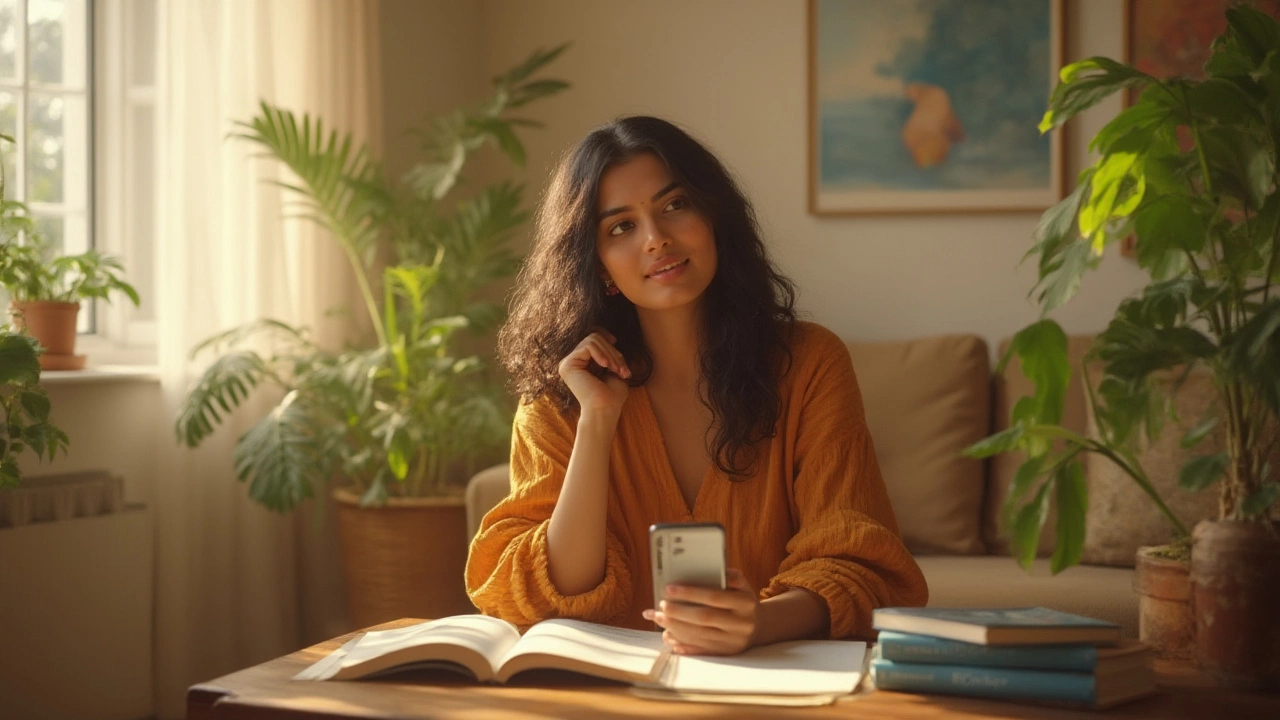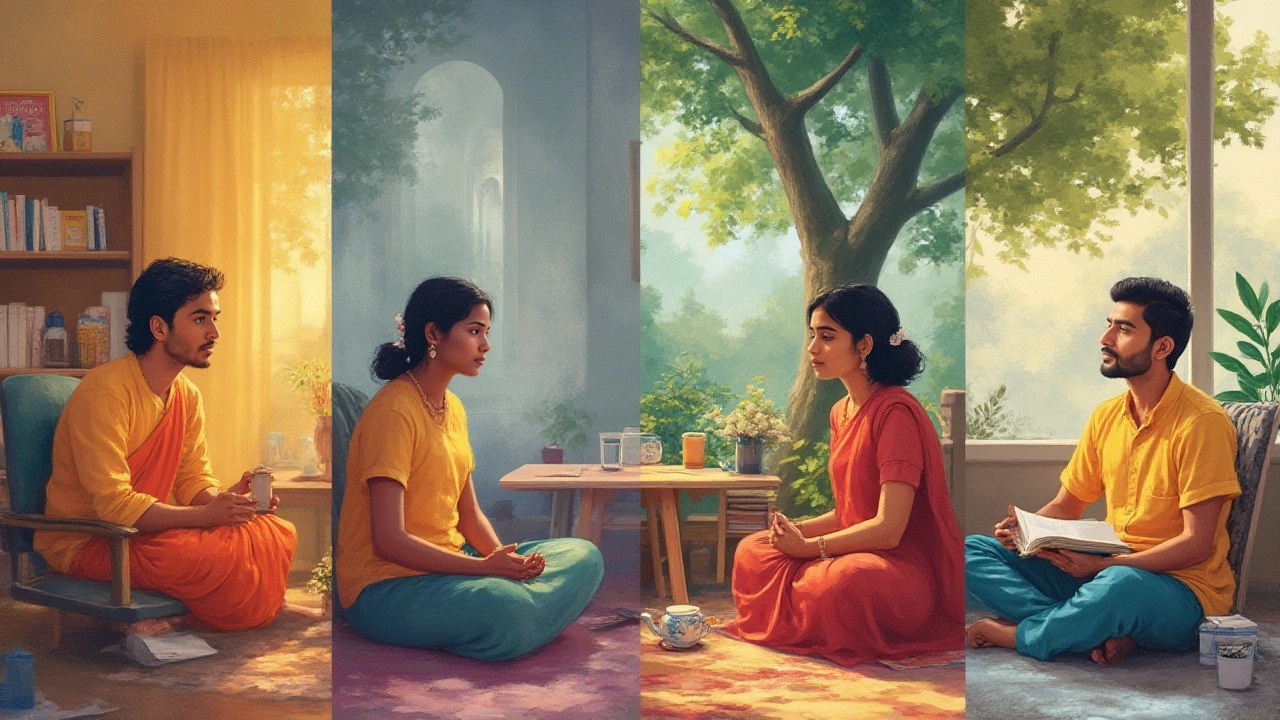
Imagine lying in bed, wide awake, heart pounding, mind swirling with worries you can’t shut off. That choking grip of anxiety is more common than we’d like to admit. If you’ve ever Googled ‘best therapy for anxiety’ in the middle of the night or swapped nervous stories over filter coffee at a Bangalore café, you’re not alone. Anxiety disorders impact an estimated 284 million people worldwide, with rates steadily climbing in bustling cities like ours. In India, the National Mental Health Survey 2022 put the prevalence of anxiety disorders at roughly 3.6%, though experts believe the real number is higher—especially post-pandemic. It’s high time we cleared the fog: what kind of therapy actually works when you’re caught in the whirlwind of anxious thoughts?
The Science Behind Therapy for Anxiety
Let’s get straight to the heart of it: not all therapies are built the same, and what works for one person may not work for another. But some therapies just have more solid proof. Cognitive Behavioral Therapy (CBT) is the reliable backbone—it’s the one most mental health professionals mention first, and for good reason. Decades of studies, including a massive 2021 review in "The Lancet Psychiatry," have found CBT can reduce anxiety symptoms in up to 60% of adults significantly. CBT is practical: you tackle negative thoughts, break down habits, and learn skills you can use daily. The approach is structured, action-oriented, and therapists often give homework (yes, actual exercises). If you struggle with spiraling worries, social phobia, or panic attacks, research says CBT gives the most bang for your buck.
But CBT isn’t the only show in town. Mindfulness-based therapies, like Mindfulness-Based Stress Reduction (MBSR) and Acceptance and Commitment Therapy (ACT), have exploded in popularity. They encourage you to observe your thoughts without judging them—and while it sounds squishy, scans from Indian medical colleges (like NIMHANS) show regular mindfulness can shrink the amygdala, the little almond-shaped spot in your brain that sounds the ‘panic’ alarm. This translates to fewer racing thoughts and more calm. Then there’s Exposure Therapy, especially helpful for phobias: you slowly, safely face your triggers with support, until your anxiety dials down. Eye Movement Desensitization and Reprocessing (EMDR), born from trauma therapy, has also found a spot in the anxiety toolkit, especially for people struggling with anxiety because of past events.
How do these therapies stack up side by side? Here’s a quick look:
| Therapy Type | Main Focus | Best For | Reported Success Rate (%) |
|---|---|---|---|
| Cognitive Behavioral Therapy (CBT) | Change thought patterns | Panic, GAD, phobias | 60 |
| Mindfulness-Based Therapy | Awareness & acceptance | Stress, mixed anxieties | 50 |
| Exposure Therapy | Gradual trigger confrontation | Phobias, OCD, PTSD | 55 |
| Acceptance & Commitment Therapy (ACT) | Accepting thoughts | Generalized anxiety | 48 |
| EMDR | Process trauma | PTSD, some anxieties | 50 |
The data isn’t just from the West; Indian practitioners increasingly blend these methods, personalizing sessions for everything from work stress in IT corridors to postpartum worries.
How Different Therapies Feel in Real Life
The way therapy feels day-to-day matters, especially if you’re juggling deadlines, family obligations, and that infamous Bangalore traffic. CBT is like personal training for your mind. Sessions involve setting goals, discussing real-life triggers, and practicing new ways to react. It’s hands-on—be ready for worksheets, self-monitoring apps, or even quick assignments between sessions, like keeping a worry diary. People who love structure, or like tracking progress, often click with CBT. I remember late evenings watching Rajat flipping through his self-monitoring notes, surprised at how quickly patterns showed up.
Mindfulness therapy, in contrast, is gentle but persistent. You might spend a chunk of each session learning to breathe deeply or scan your body for tension. Don’t be fooled—it’s not just sitting there doing ‘nothing’. Those simple breathing practices are shown in studies (including a 2023 randomized trial at AIIMS Delhi) to lower cortisol in anxious patients by 25% in just eight weeks. Mindfulness isn’t about getting rid of anxiety; it’s about not letting it boss you around. For those with hectic lives or who’ve struggled with ‘thinking too much’, it can feel like finally taking the pressure off yourself to fix every pesky thought.
Exposure Therapy is more direct, sometimes a bit nerve-wracking. It’s about facing down fears step by tiny step—but never alone. For example, someone scared of public speaking might start by reading aloud to their therapist, then practice giving a toast at a small family dinner. If the idea of jumping straight into challenges sounds overwhelming, therapists always start slow and adjust the pace. It’s normal to feel anxious at first, but people report a sense of accomplishment as they move up the ‘exposure ladder’—even if the rungs are tiny.
Some people with stubborn or trauma-based anxiety end up trying EMDR. In sessions, you’ll talk about hard memories while following a pattern of sensory input (like moving eyes side-to-side). It’s been shown to help process events that keep anxiety stuck on ‘replay’. For others, therapies that mix in bodywork, like yoga-based interventions, are gaining ground in India, especially with therapists who understand traditional practices. While the evidence isn’t as large-scale as for mainstream therapies, a small pilot at NIMHANS found that combining yoga breathing with CBT led to better results than either alone for some patients.
So how do you know which will work for you? Most therapists encourage trying what feels most comfortable. The real magic often happens in the connection with your therapist, the willingness to practice between sessions, and sticking with it long enough to see change.

Tips to Find Your Best-Fit Anxiety Therapy
The pile of options can make choosing feel dizzying—especially when you’re already anxious. Here’s what actually helps:
- Start by defining your anxiety: Is it constant (generalized), comes in bursts (panic), tied to certain situations (social or phobias), or rooted in trauma? The type may guide your choice.
- List what feels manageable: Structured talk (CBT), breathing and awareness exercises (mindfulness), or gradual exposure? There’s no wrong starting point—many people try a few before settling.
- Check your therapist’s credentials: In India, look for psychologists with an MPhil in Clinical Psychology, or psychiatrists. It’s okay to ask about their experience with specific therapies.
- Consider practicalities: Online therapy (offered more since the pandemic), short-term vs. long-term commitment, session costs, and language preference. The easier the fit, the more likely you’ll stick with it.
- Don’t expect instant relief: On average, noticeable improvement comes after about 8-12 sessions, though some feel better sooner (CBT studies from India put median response time at 10 sessions).
- Complement with lifestyle tweaks: Sleep, movement, and supportive social circles play a huge role—41% of anxiety patients in a 2022 Manipal Hospital survey cited “talking with friends” as their biggest coping tool.
- If nothing works, re-assess: Sometimes anxiety needs medication plus therapy, or a combination of approaches. That’s not a failure—it’s personalization.
A lot of folks keep quiet about therapy because of old-school stigma, but those attitudes are shifting, especially among younger Indians. Therapists now regularly see clients from all backgrounds, not just crisis cases. Think of it as mental fitness—the same way you’d see a doctor for a sprained ankle, seeing a therapist for anxiety is simply being proactive.
If you’re still on the fence, try a trial session. Most therapists offer a free or low-cost consult, so you can get a feel for their vibe, approach, and even their accent or language style. Given how fast mental health services are growing in urban India (teletherapy startups in Bangalore alone have jumped by 70% since 2021), it’s never been easier to find someone who gets you.
Combining Therapies and Local Realities
Don’t let a long list of therapies worry you—sometimes, the best results come from mixing and matching, depending on where you are in your journey. There’s no rule that says you must pick just one. Indian clinics and hospitals now blend therapy types, called an ‘integrative’ approach. For instance, CBT might be paired with yoga-based mindfulness or even art therapy for children. A study at NIMHANS in 2022 tracked patients who combined CBT with weekly yoga: 67% showed greater symptom drop than either approach solo. It’s not about quick fixes—it’s about layering tools until you hit something that clicks.
Cultural context makes a difference, too. What works in America or France might feel odd in Bangalore. Therapists here often weave in family counseling or spiritual discussions, if that matters to you. Group therapy (available at several Bangalore hospitals) can also give a strong sense of “I’m not alone.” Interestingly, stigma is slowly being replaced by open conversations, especially in urban WhatsApp communities and office wellness chats.
What about self-help apps or books? Apps based on CBT (like Mindhouse or Wysa) and guided meditations are helpful as add-ons, especially for busy people. Just don’t expect an app to entirely replace human support—most recent research finds outcomes are best when tech supplements real-time therapy, not replaces it.
Therapy can get expensive, but many psychiatrists offer sliding-scaled fees, or run group sessions at lower rates. Several workplaces in Bangalore now provide Employee Assistance Programs that cover therapy up to a certain number of sessions—a huge win if you’re trying to manage costs. Government initiatives, such as Tele MANAS, have also made helplines available 24/7 for immediate support.
The truth is, there’s no one-size-fits-all answer when it comes to therapy for anxiety. The best therapy is the one you’re willing to try, stick with, and tweak as life changes. Anxiety isn’t a flaw—it’s a sign your nervous system is stuck on high alert. With science-backed therapy, a bit of patience, and a support network (even if that means just one kind person), it really is possible to turn the volume down and get back to living life, not just enduring it. If you find yourself awake at 2 a.m., know there are options—and every step you take is real progress.

Write a comment